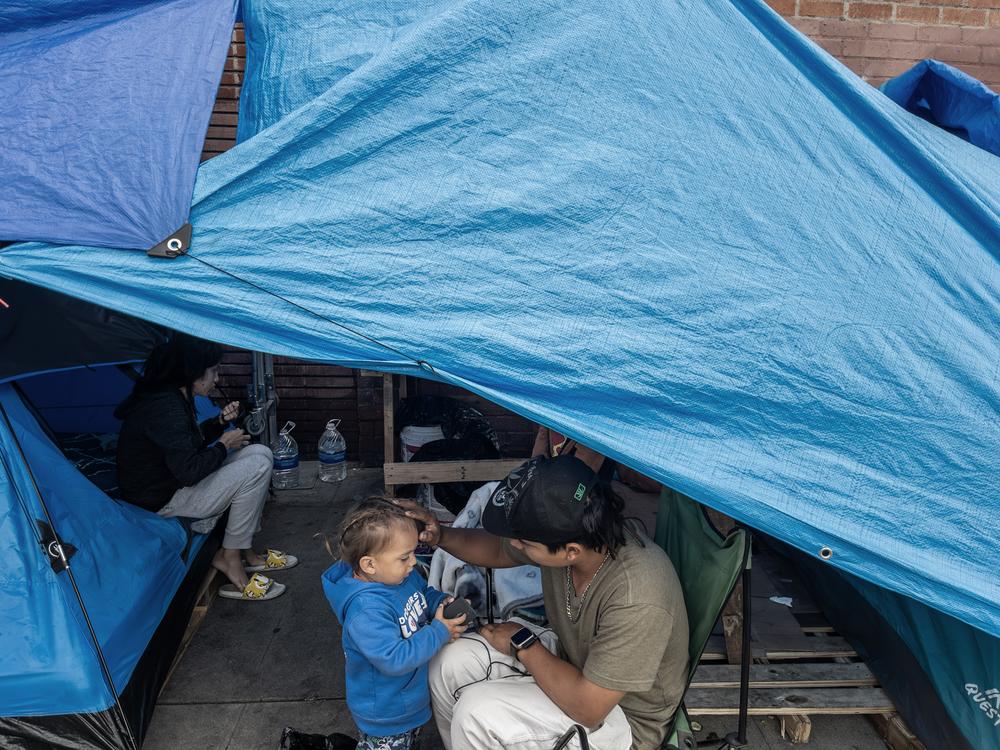Section Branding
Header Content
When little kids don’t have stable housing, it can affect their health later
Primary Content
Not having secure housing is a huge stress for anyone. But when children experience this, especially in early childhood, it can affect their health years down the line.
That’s the finding of a new study in the journal Pediatrics, which says that teens who experienced housing insecurity earlier in life were more likely to report worse health.
“Pediatricians, for a long time, have suspected that housing insecurity is associated with negative health outcomes,” says Dr. Hemen Muleta, a pediatrician at The Children’s Hospital at Montefiore in New York City.
But this is important evidence from a longitudinal study that follows children from infancy to adolescence and connects their experiences of housing insecurity with long term health, she adds.
In-depth research over time
The Future of Families and Child Well-Being study has been following a group of children across the country since their birth over 20 years ago.
Researcher Kristyn Pierce and her colleague in the department of pediatrics at NYU Grossman School of Medicine mined data from that study to get a good sense of kids’ experiences with housing from birth to age 15.
“We took measures of housing insecurity that were collected throughout their participation,” says Pierce.
That included indicators like “homelessness, eviction, doubling up, meaning like overcrowding in the house and spending a night in a place that wasn't meant for residents and also difficulty paying for rent or mortgage.”
Degrees of difference
A majority of the kids in the study – 47% – had stable housing throughout the study. “There was not one indicator [of housing insecurity] throughout their 15 years of participation,” says Pierce.
A similarly large group – 46% – was what Pierce and her colleagues call “moderately insecure.”
“Maybe they just had insecurity at one time point, and then were fully secure at another one,” says Pierce. “So it was sort of fluctuating and low.”
The third and smallest group – 6% of the study population – had high levels of housing insecurity, especially in early childhood, but with stable housing later on.
Kids with any level of housing insecurity – low or high – had worse self-reported health at age 15, says Pierce. They also reported worse mental health.
“Children in both insecure groups reported higher levels of depression,” says Pierce. “And then only those in the highly insecure group reported higher levels of anxiety.”
A measure for children
Most past studies have looked at the health impacts of housing problems in adults, says Rahil Briggs, the national director of Healthy Steps, a program that supports low income families with kids between the ages of zero and three.
“This study is really important in terms of focusing our attention on teens,” says Briggs, who wasn’t involved in the new study.
“Everything we know about [early] childhood is that it's the most critically important time to get your foundation right,” she adds.
So it makes sense that experiencing housing instability in those early years would affect health in adolescence.
This goes back to Maslow’s hierarchy of needs, explains Briggs.
“It's got five levels to it. And at the very, very bottom is what they call physiological needs breathing, food, water, sleep and shelter,” she says. “So just as foundational as breathing and water and food and sleep is this idea of shelter.”
The absence of a safe and secure shelter creates “chronic and unrelenting” stress for the parents or caregivers, which is then picked up by kids, as well.
“The acute stress of the parent and chronic stress with parents leads to dysregulation in children,” which in turn affects their development and mental health down the line.
“It tells us that, you know, you need to intervene early,” says Dr. Suzette Oyeku, a pediatrician and the chief of Division of Academic General Pediatrics at Montefiore and Albert Einstein College of Medicine.
Pediatricians can help
That early intervention starts with screening families with young children, says Dr. Carol Duh-Leong, a pediatrician at Hassenfeld Children's Hospital NYU Langone and co-author of the new study. “As a primary care pediatrician, I'm a big believer in the primary care clinic as sort of a population health based place where we can reach a lot of children, especially young children.”
Pediatricians who are part of the Healthy Steps effort already screen families with newborns up to age three several times during well-child visits .
“Ninety percent of young children regularly attend well-child visits. It is the single and only setting that we have in this country to regularly reach young children in their families. Furthermore, families trust pediatricians,” Briggs says.
It’s something Montefiore has also been doing.
“Here at Montefiore, we screen all of our clinic pediatric patients for social needs,” says Muleta, including housing insecurity.
Both at Healthy Steps clinics and at Montefiore, families who need help with housing are connected to resources in the community through a social worker or a community health worker.
Montefiore’s Community Health Worker Institute, which opened in 2021, has reached more than 6,000 families with social needs, including housing, says Oyeku.
However, Muleta admits that “of all the social needs that we screen for and intervene upon, I would say that housing insecurity is probably one of the most difficult and the longest to be able to resolve.”
It’s a reality tied to the limited availability of affordable housing, she adds.

